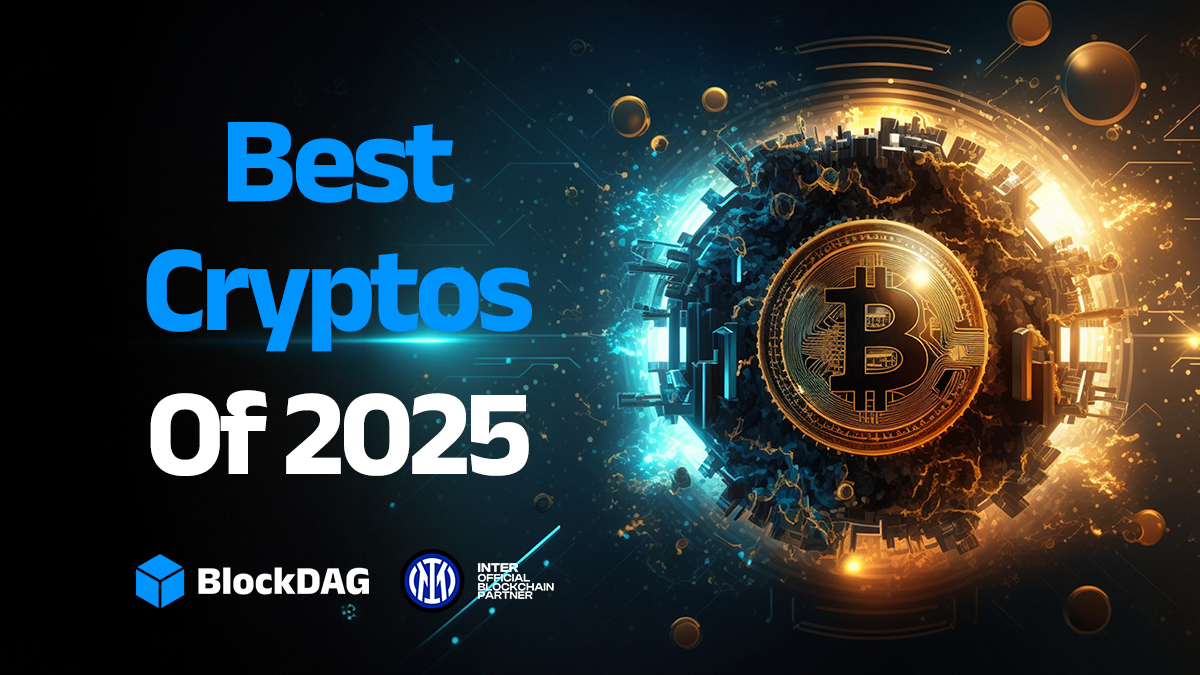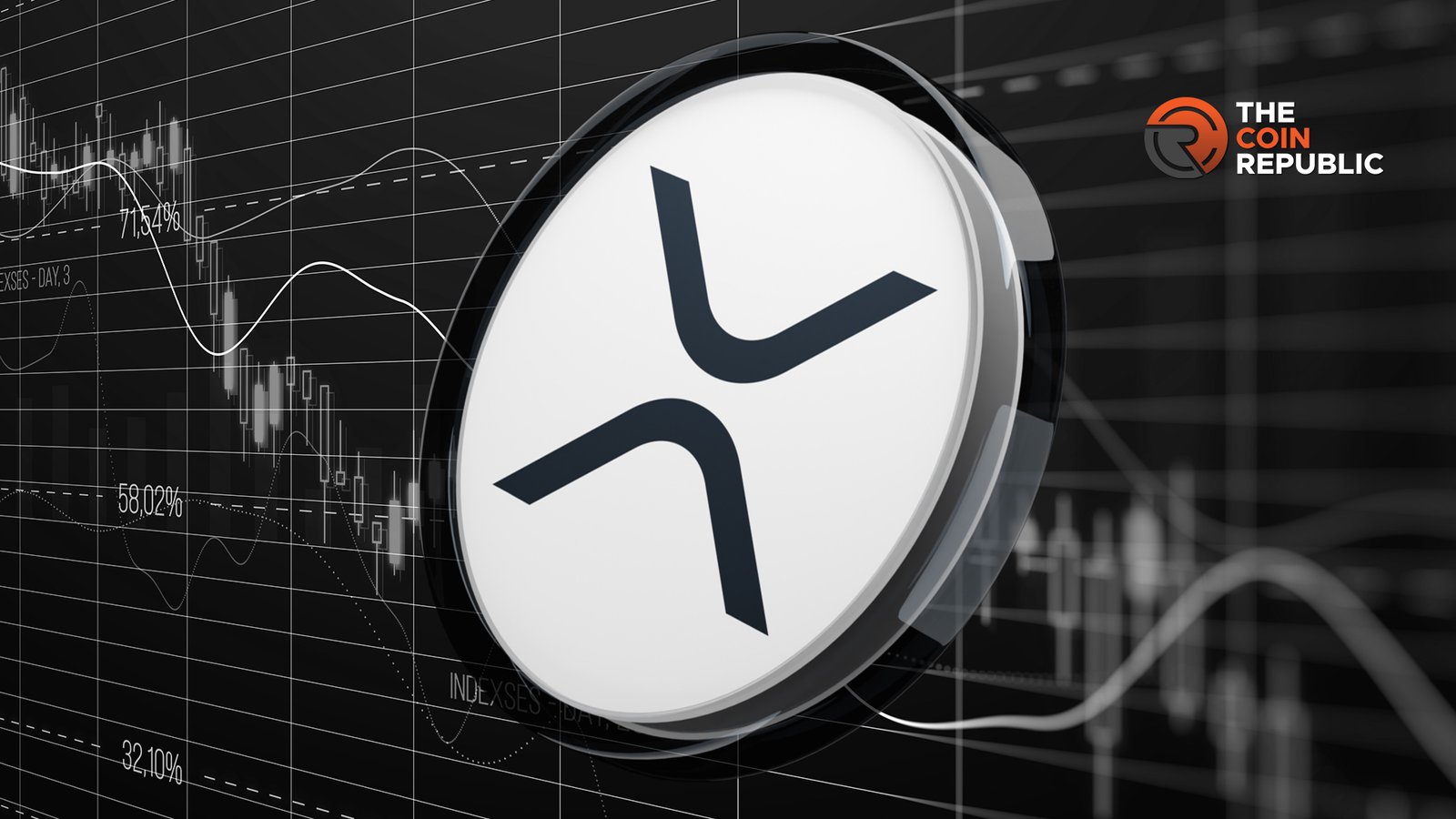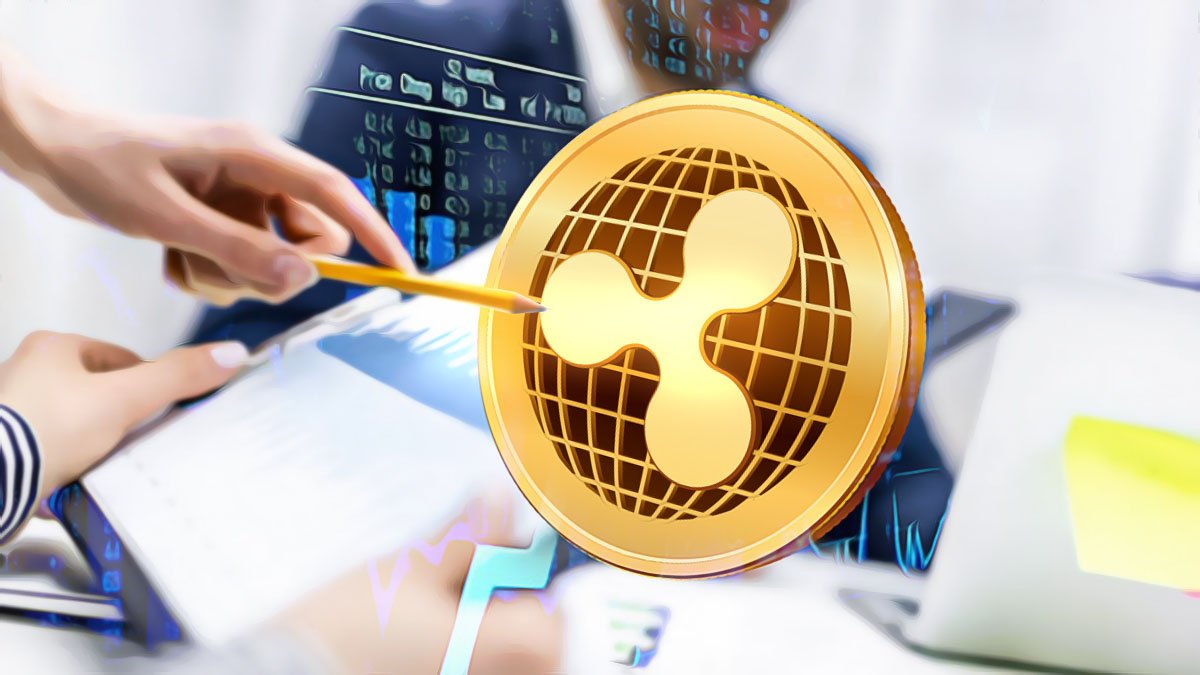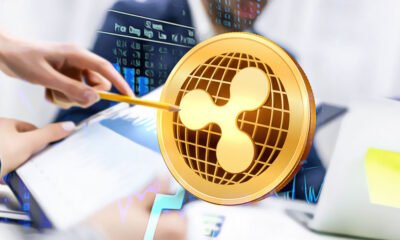Crypto
Investors Are Rushing to These 4 Picks: Best Crypto to Invest in 2025 Starts With BlockDAG

If you’re looking for the best crypto to invest in 2025, the clock is ticking. Some of the most promising tokens are entering their final presale phases or are preparing major upgrades. Timing matters: and right now, BlockDAG is the one with the most urgency attached.
Below are four cryptos worth serious consideration, starting with a project whose opportunity window closes on August 11.
BlockDAG (BDAG): Final Days to Buy at $0.0016 Before August 11
BlockDAG tops the list for one reason: its limited-time pricing and the 10 BTC Auction that ends August 11. With over $359 million already raised, 24.6 billion coins sold, and an ROI of 2,660% since batch 1, this project isn’t just attracting interest: it’s delivering returns.
Currently in batch 29 with a listed price of $0.0276, BlockDAG is offering a temporary price freeze at $0.0016 for final buyers. This discount gives latecomers a chance to outperform early investors in terms of ROI, but only if they act before the deadline.
The auction itself isn’t a lottery. It’s weighted by how much you spend, meaning higher buyers have better odds of receiving larger BTC prizes. To qualify:
- You must invest at least $100 in BDAG before August 11
- Auction rewards are drawn from a 10 BTC pool
- Top contributors receive the biggest slices
This scarcity model has made BlockDAG one of the best crypto investments of 2025 for those who value real opportunity with real timelines. With its hybrid Proof-of-Work + DAG architecture, scalable Testnet, and mass adoption tools like the X1 mobile miner, BlockDAG combines practicality with speed. But all of it hinges on action before August 11.
Chainlink (LINK): Strong Utility, Low Entry Point
Chainlink remains a strong option for practical investors. As the go-to oracle network for bringing off-chain data on-chain, its demand is built into how smart contracts operate across Ethereum, BNB Chain, and more. In 2025, LINK is expected to play a larger role in tokenized real-world assets, especially as institutional adoption grows.
Its staking upgrade has added extra utility for holders, allowing long-term investors to earn passive rewards. Chainlink isn’t speculative: it’s a utility-based play that benefits from broader Web3 growth. While it doesn’t offer extreme upside like new presales, its low volatility and high use-case relevance make it a solid long-term crypto investment.
Monero (XMR): Privacy Coin with Loyal Demand
Monero has remained under the radar due to its privacy features, but that’s exactly what makes it valuable. With rising concerns around blockchain surveillance, Monero continues to attract buyers who want real anonymity in their transactions. Unlike many crypto projects that follow trend cycles, XMR has consistent demand from privacy-focused users.
In 2025, as regulatory debates intensify, privacy coins could see increased relevance. Monero is the most trusted name in this category, with strong decentralization and long-standing developer support. It’s less about hype and more about consistent, user-driven utility: a practical choice for those who value portfolio resilience.
Tron (TRX): Cheap Transactions, Real Adoption
Tron is one of the few crypto networks that’s quietly achieved real-world usage at scale. Its low fees, fast transactions, and stablecoin integrations (especially USDT on Tron) make it a favorite for payments and global money movement. Tron’s usage metrics are consistently high, even if it doesn’t always grab headlines.
For 2025, Tron is leaning into expanding its DeFi and gaming ecosystems, with cross-chain compatibility and growing developer activity. It may not offer explosive returns, but its utility and low barrier to entry make it one of the best cryptos to invest in 2025 if you’re seeking reliability with steady growth.
Final Takeaway
If you’re trying to find the best crypto to invest in 2025, it’s not about chasing every trend: it’s about acting before windows close. BlockDAG’s $0.0016 price and 10 BTC Auction end on August 11. After that, the price jumps and the rewards vanish. Chainlink, Monero, and Tron also offer practical upside based on real use cases and strong user support, but none have a countdown clock like BDAG.
Don’t wait. Scarcity is real: and in crypto, those who move first often move best.
Crypto
XRP Price Faces Whale Pressure but Analysts Predict Bullish Reversal in August

XRP price declined over 2.87% in 24 hours and traded near $2.8 after the recent sell-off, with whale activities creating a sudden slump.
More than 710 million of the Ripple coins were dumped within 24 hours, which is an indication of distribution pressure.
Technical analysts, however, indicated a possible bullish turnaround with a possibility of an upward move towards the range between $6 and $8 in August.
XRP Price Neared $2.80 Support as Wave 5 Ends
XRP price continued to correct following a sharp move from $3.65 to below $3.00. Analyst Mr. Xoom mapped a five-wave Elliott structure on the 4-hour chart, with wave (5) in progress.
The price is trading at around $2.79, and a final leg down is expected to meet $2.70-$2.80, where the price will reverse.

Additionally, the analyst affirmed that he did not anticipate XRP price to dip below the $2.80 support.
A completed corrective wave sequence can be expected from this event, as the retraced price drawdown was closer to previous Fibonacci levels.
Xoom maintained that once the fifth wave concludes, a major reversal could take place. His upside target for August remained $6–$8, assuming bullish confirmation.
Price action mirrored prior rallies, which occurred off five-wave declines in 2023 and early 2024.
Moreover, the decreasing volume of the fifth wave suggested the possible slowing of selling pressure.
Ripple Whale Wallets Dumped 710 Million XRP
In the meantime, Ali Martinez shared Santiment data revealing a mass XRP whale sell-off.
The wallets between 100 million and a billion Ripple coins lost more than 710 million tokens within a single day. This wave of distribution coincided with the altcoin drop from above $3.10 to $2.83.

The chart showed a steep decline in whale-held supply between July 31 and August 1.
This selling pressure was in line with the past top indicators in mid-June and July, where whales started to reduce their positions before corrections.
The analysis offered by Ali indicated that the latest distribution was the sharpest in months.
Rounded Bottom After Post-Rally Correction
In parallel, technical analyst BitGuru provided a 4-hour chart showing a rounded bottom forming after the decline from $3.65.
Prior to commencing the recent descending trend, XRP price went up as high as $3.6. Now, with the the price is patterned into a bowl-like shaped base, and consolidating around $2.8.

The bullish formation was characterized by a reversal zone that coincided with a past consolidation in mid-July.
RSI was around the neutral line, and the MACD started flattening, which is a typical indicator before XRP price reversal.
Institutional Adoption Reinforces Long-term Structure
Institutional developments also contributed to the thesis of long-term XRP price rally. Ripple has already unlocked access to $2.5 quadrillion settlement system through the acquisition of Securrency.

The joint venture with DTCC via Securrency positioned Ripple in line with conventional market settlement procedures.
More importantly, analyst Squire pointed out that XRP’s role extended beyond price speculation to enabling real-world value transfer at scale.
Institutional-grade adoption might decrease circulating float over time, especially if more financial networks opt in.
Meanwhile, in other XRP news, an analyst revealed why August could be pivotal for the altcoin’s momentum shift.
The post XRP Price Faces Whale Pressure but Analysts Predict Bullish Reversal in August appeared first on The Coin Republic.
Crypto
Traditional Banks Fuel Crypto Surge with Major Investments

You can also read this news on BH NEWS: Traditional Banks Fuel Crypto Surge with Major Investments
Traditional banks have injected over $100 billion into the cryptocurrency and blockchain landscape since 2020. This substantial investment, highlighted in the “Banking on Digital Assets” report by Ripple, CB Insights, and the UK Blockchain Technologies Centre, analyzed more than 10,000 investment deals. The research surveyed over 1,800 finance executives globally. While the sector still faces regulatory and market challenges, efforts to develop services such as custody, tokenization, and payment systems are gaining traction. Traditional banks are transitioning from speculative activities in cryptocurrencies to reinforcing their infrastructure frameworks.
How are Cross-Border Payments Affected?
The report illustrates that traditional financial entities have engaged in 345 blockchain-related deals from 2020 to 2024. A significant portion, nearly 25%, of these investments targets infrastructure companies behind blockchain settlement and asset issuance platforms, with cross-border payments taking precedence. Alongside, crypto custody solutions, tokenization, and blockchain-based foreign exchanges also draw attention. Moreover, 65% of banking executives delve into custody services, while more than half prioritize stablecoins and tokenized real-world assets.
Do Regulatory Hurdles Impede Progress?
Despite regulatory hurdles in the US and Europe, the momentum for adopting blockchain technology hasn’t waned. After the FTX exchange’s downfall in early 2024, there was a notable surge in blockchain investments, particularly from traditional finance sectors. Emerging markets, including the UAE, India, and Singapore, have rapidly embraced the technology, consequently aligning global capital more toward these advancements.
Highlighted examples from the report include HSBC’s tokenized gold offering, Goldman Sachs’ GS DAP initiative, and SBI’s quantum-resistant currency project. Yet, fewer than 20% of banks provide options for trading cryptocurrencies or personal digital wallets.
Organizations intend to leverage blockchain to enhance balance sheet management, boost liquidity, and phase out legacy messaging infrastructures. Survey results reveal that 90% of finance leaders expect cryptocurrencies to wield “significant” or “very large” influence over the financial sector by 2028. Notably, half of these entities foresee the initiation of tokenized bond pilots or establishing settlement layers for central bank digital currencies (CBDCs) and private stablecoins in the upcoming three years.
Key insights from the report include:
- Financial entities directed 25% of blockchain investments to settlement and asset issuance infrastructures.
- Nearly two-thirds of executives are exploring custody solutions.
- Over 50% emphasize the importance of stablecoins and tokenized assets.
- Post-FTX, there was a spike in traditional finance-led blockchain investments.
Ripple’s report underlines the move toward tokenizing real-world assets, now poised for execution. This evolution showcases the resilience and forward momentum in the financial sector, underscoring traditional banks’ pivotal role in fostering blockchain and crypto adoption globally.
Crypto
New FUD Spreading: Has China Really Banned Bitcoin and Cryptocurrencies Again? Here’s the Truth

In recent hours, some social media accounts have begun spreading false rumors that China has banned cryptocurrencies again.
However, these claims are not based on official sources and contradict existing regulations. Here are four important facts about China’s cryptocurrency policies:

- Hong Kong is welcoming the cryptocurrency sector: Hong Kong, a special administrative region of China, has embraced cryptocurrencies as a pilot region. Local regulators continue to license crypto exchanges.
- Individual transactions are not prohibited: Individuals are not prohibited from buying or selling cryptocurrencies in China. Only financial institutions and companies are prohibited from offering cryptocurrency services. Personal cryptocurrency ownership is legal.
- Bitcoin mining continues: Bitcoin mining is still a viable option in some parts of China due to affordable energy costs. Despite the 2021 bans, many miners continued their operations underground.
- Stablecoin and RWA interest growing: Chinese authorities have begun to show interest in stablecoins and projects that tokenize real-world assets (RWA).
Related News: Japanese Tech Giant Announces Plan to Purchase Large Amount of Bitcoin
China hasn’t officially announced any new regulations regarding cryptocurrencies recently. The country’s crypto ban dates back to 2021. The latest rumors are linked to China’s efforts to tighten financial control and accelerate the adoption of its state-backed digital currency, the digital yuan (CBDC). However, there are currently no new bans in place.
-
Army Jobs2 days ago
Pak Navy Civilian Jobs 2026-A Batch – Apply Online
-
Army Jobs4 days ago
Pakistan Air Force GD Pilot Registration 2025
-

 Uncategorized2 days ago
Uncategorized2 days agoCZ Questions TON’s UAE Golden Visa as Official Sources Stay Silent
-

 Uncategorized2 days ago
Uncategorized2 days agoUK Sends 2 to Prison for Combined 12 Years for Crypto Scam
-

 Business2 days ago
Business2 days agoRussia’s Energy Ministry Launches Crypto Mining Register
-

 Business2 days ago
Business2 days agoArthur Hayes doesn’t care when his Bitcoin predictions are totally wrong
-

 Uncategorized2 days ago
Uncategorized2 days agoBitcoin Price Could See “Brief Rally Halt”: Here is Why
-

 Crypto2 hours ago
Crypto2 hours agoTraditional Banks Fuel Crypto Surge with Major Investments


